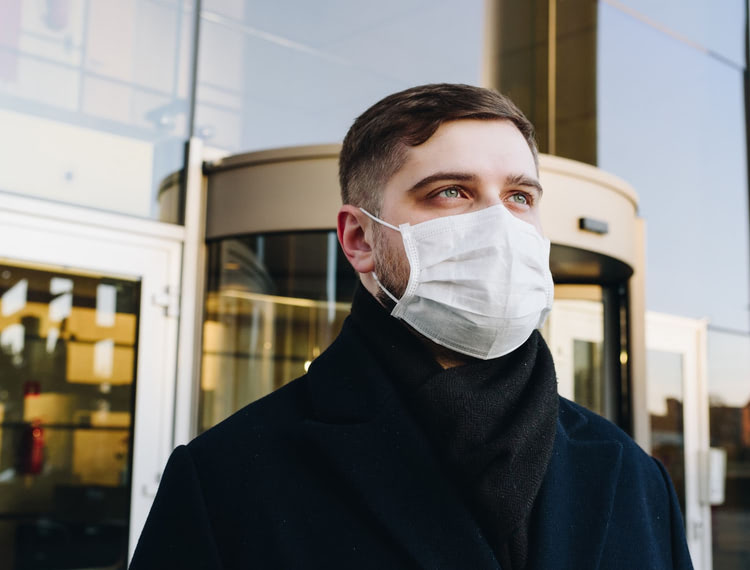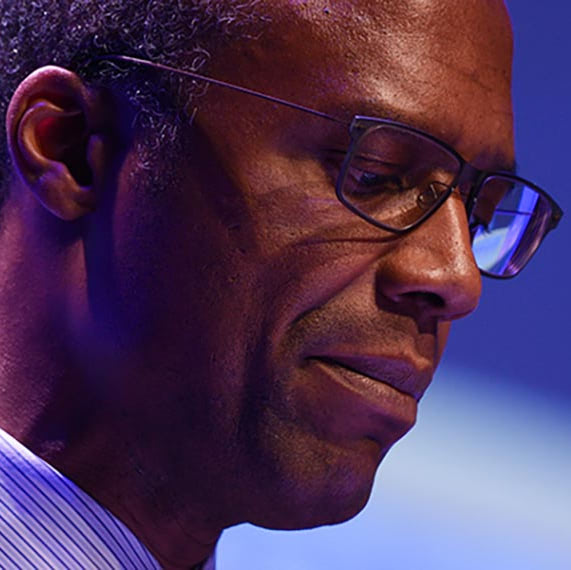The Department for Education is updating its advice on Face coverings in education

The World Health Organisation (WHO) published a new statement on the 21 August on when children should wear face coverings. They now advise that “children aged 12 and over should wear a mask under the same conditions as adults, in particular when they cannot guarantee at least a 1-metre distance from others and there is widespread transmission in the area.”
As a result, the government is revising its guidance on face coverings for staff and children in Year 7 or above in England. Nationwide, while the government is not recommending face coverings are necessary, schools will have the discretion to require face coverings in communal areas if they believe that is right in their particular circumstances.
In addition, and consistent with WHO’s new advice, the government will advise additional measures are taken in areas where the transmission of the virus is high. In these areas, defined as areas of national government intervention as listed on gov.uk, the government’s guidance will state face coverings should be worn by adults and pupils in secondary schools when moving around the school, such as in corridors and communal areas where social distancing is difficult to maintain. It will not be necessary to wear face coverings in the classroom, where protective measures already mean the risks are lower, and where they can inhibit learning.
This revised approach will also apply to further education colleges and will be reflected in guidance to universities, but not to children in primary schools where the risks to children are lower. Updated guidance on face coverings in all education settings will be published shortly and will come into effect from 1 September.
Education Secretary, Gavin Williamson said:
“Our priority is to get children back to school safely. At each stage we have listened to the latest medical and scientific advice. We have therefore decided to follow the World Health Organisation’s new advice. In local lockdown areas children in year 7 and above should wear face coverings in communal spaces. Outside of local lockdown areas face coverings won’t be required in schools, though schools will have the flexibility to introduce measures if they believe it is right in their specific circumstances. I hope these steps will provide parents, pupils and teachers with further reassurance.”
Consistent with WHO’s advice, if the rate of transmission increases across the whole country, it may be necessary to apply stricter guidance on face coverings in schools nationally. This is not necessary at the moment but the government will keep the evidence on transmission under constant review.
Responding to the updated Government guidance on the use of face masks in schools
 Dr Patrick Roach, General Secretary of the NASUWT – The Teachers’ Union, said:
Dr Patrick Roach, General Secretary of the NASUWT – The Teachers’ Union, said:
“The NASUWT has been pressing the Government to address the contradiction between its general advice requiring the use of face masks and face coverings in many public places and its position on their use in schools.
“It is deeply regrettable that the Government has failed to heed concerns until the last possible moment.
“The latest announcement on face coverings raises serious questions about whether the Government is seriously following the scientific advice or is simply prioritising political expediency in order to meet the Prime Minister’s wish to ensure that every school reopens fully at the start of term come what may.
“This latest Government U-turn will raise questions about the statement issued by the UK’s Chief Medical Officers last Sunday that there is a low risk of Coronavirus transmission in schools.
“Face masks and visors can help in the battle against Coronavirus if used correctly, but they are not a substitute for stringent social distancing, good hand hygiene and enhanced cleaning of surfaces by appropriately trained staff.
“As many schools continue to work hard to prepare for the new term, many headteachers and teachers have continued to raise concerns about the practical difficulties they are experiencing in ensuring effective social distancing arrangements in classrooms and throughout their schools. It is vital for the safety of staff, pupils and the wider community that the Government listens to and acts on those concerns.
“Where schools are unable to ensure effective social distancing, it is clear that other effective measures will be needed to in order to protect public health.
“Where there is a heightened risk of virus transmission in a school or local area, priority has to be given to reducing social contact and ensuring stringent social distancing in classrooms as well as in communal areas.
“The Government must also make clear that where a child or adult has symptoms of Coronavirus, wearing a face mask is not the answer and they must stay at home.”
 Kevin Courtney, Joint General Secretary of the National Education Union, said:
Kevin Courtney, Joint General Secretary of the National Education Union, said:
“Our union fully supports the opening of schools to all students in England from next week. After the enormous effort the nation has made to get the case numbers down, it is absolutely right to go back, but it has to be done in a way that is safe for staff and students alike.
“What is vital now is to keep the R rate below 1, and that means continuing to do all that we can to ensure case numbers remain low. So, if the World Health Organisation says that 12 years old and above should be wearing face masks in communal school areas, then our Government needs to look at that very seriously.
“It does matter, however, that there is a lack of confidence when ministers and senior medical advisers say different things for four days. This is no sort of assurance for the profession, parents or the public. The Government should have been looking at that WHO advice, coming to a considered position and then presenting it to the public. The alternative has been slow, incoherent, and a failure of leadership.
“We welcome the steps now being taken, but it is a halfway house to pass the decision to head teachers. There has to be a science-led approach from the top. It might be that face masks in communal areas are a good thing in parts of the country with high transmission, it might be that they are not as necessary in areas of low transmission. The Government needs to decide on that and give clear guidance to school leaders.
“We are also pressing the Government to look at another part of the World Health Organisation statement. At the same time they talked about over-12s, the WHO called for staff aged over-60 or otherwise vulnerable and who work closely with children, to wear medical-grade masks. Our many affected members will expect Government to deliver robust plans to meet, fund and co-ordinate a response to this new scientific advice.”
UNISON head of education Jon Richards said:
“This is a welcome step forward but still leaves a confusing picture.
“The focus on learners is understandable but the government has already admitted staff face the biggest risk. In further education institutions that risk is even greater as staff tend to be older.
“The unique conditions in FE colleges – where some learners also spend part of their week in the workplace – mean bubbles won’t be effective.
“Colleges should recognise these issues and allow those who want to wear coverings to do so. But it’s the government that should be taking the lead on this, not passing the buck to individual college heads.
“There must also be a clear explanation of why the government’s view of the science seems to be different to the other nations of the UK.”
This guidance is intended to support early years and childcare providers, schools, including alternative provision, and colleges with new advice on the use of face coverings.
All pupils, in all year groups, will return to education full-time from the beginning of the autumn term.
From 1 September new advice will apply to the use of face coverings by staff and pupils in some schools, and to learners in further education.
The World Health Organisation published a statement on 21 August about children and face coverings. They now advise that “children aged 12 and over should wear a mask under the same conditions as adults, in particular when they cannot guarantee at least a 1-metre distance from others and there is widespread transmission in the area.”
Nationwide, the government is not recommending face coverings are necessary in education settings generally because a system of control, applicable to all education environments, provides additional mitigating measures. Schools and colleges will have the discretion to require face coverings in communal areas where social distancing cannot be safely managed, if they believe that it is right in their particular circumstances.
Examples of where education leaders might decide to recommend the wearing of face coverings – for pupils and staff – in communal areas of the education setting include:
-
where the layout of the school or college estate makes it particularly difficult to maintain social distancing when staff and pupils are moving around the premises
-
where on top of hygiene measures and the system of controls recommended in the full opening guidance to schools and FE colleges and providers, permitting the use of face coverings for staff, pupils or other visitors would provide additional confidence to parents to support a full return of children to school or college
It is vital that face coverings are worn correctly and that clear instructions are provided to staff, children and young people on how to put on, remove, store and dispose of face coverings in all of the circumstances above, to avoid inadvertently increasing the risks of transmission.
Safe wearing of face coverings requires cleaning of hands before and after touching – including to remove or put them on – and the safe storage of them in individual, sealable plastic bags between use. Where a face covering becomes damp, it should not be worn and the face covering should be replaced carefully.
On the basis of current evidence, in light of the mitigating measures education settings are taking, and the negative impact on communication, face coverings will not generally be necessary in the classroom even where social distancing is not possible. There is greater use of the system of controls for minimising risk, including through keeping in small and consistent groups or bubbles, and greater scope for physical distancing by staff within classrooms. Face coverings can have a negative impact on learning and teaching and so their use in the classroom should be avoided.
This guidance is for schools and other education institutions that teach people in years 7 and above in England. There is separate guidance for early years and childcare providers and schools with children in year 6 and below.
All schools and other education settings will open fully this September. Returning to school is vital for children’s education and for their wellbeing. Time out of school is detrimental for children’s cognitive and academic development, particularly for disadvantaged children. This impact can affect both current levels of learning and children’s future ability to learn, and therefore we need to ensure all pupils can return to school sooner rather than later.
The Chief Medical Officers from all four nations in the United Kingdom have made it clear that the overall risks to children from coronavirus (COVID-19) in relation to education settings is low and that the risks associated with not being in school certainly outweigh those of being in school.
This is guidance, not mandatory activity, and any legal exemptions that apply to the wearing of face coverings in shops and on public transport also apply to this new advice.
Where local restrictions apply
Consistent with WHO’s new advice, schools and colleges should take additional precautionary measures in areas where the transmission of the virus is high. These areas are defined as areas of national government intervention.
In these local intervention (lockdown) areas, in education settings where Year 7 and above are educated, face coverings should be worn by adults and pupils when moving around, such as in corridors and communal areas where social distancing is difficult to maintain. As in the general approach, it will not usually be necessary to wear face coverings in the classroom, where protective measures already mean the risks are lower, and they may inhibit teaching and learning.
In the event of new local restrictions being imposed, schools and colleges will need to communicate quickly and clearly to staff, parents, pupils and learners that the new arrangements require the use of face coverings in certain circumstances. This updated guidance on face coverings for areas of national government intervention will come into effect on 1 September. Separate guidance will be issued on this.
Access to face coverings
It is reasonable to assume that staff and young people will now have access to face coverings due to their increasing use in wider society, and Public Health England has made available resources on how to make a simple face covering.
However, where anybody is struggling to access a face covering, or where they are unable to use their face covering due to having forgotten it or it having become soiled or unsafe, education settings should take steps to have a small contingency supply available to meet such needs.
No-one should be excluded from education on the grounds that they are not wearing a face covering.
Exemptions
Some individuals are exempt from wearing face coverings. For example people who cannot put on, wear or remove a face covering because of a physical or mental illness or impairment, or disability, or if you are speaking to or providing assistance to someone who relies on lip reading, clear sound or facial expression to communicate. The same exemptions will apply in education settings, and we would expect teachers and other staff to be sensitive to those needs.












Responses